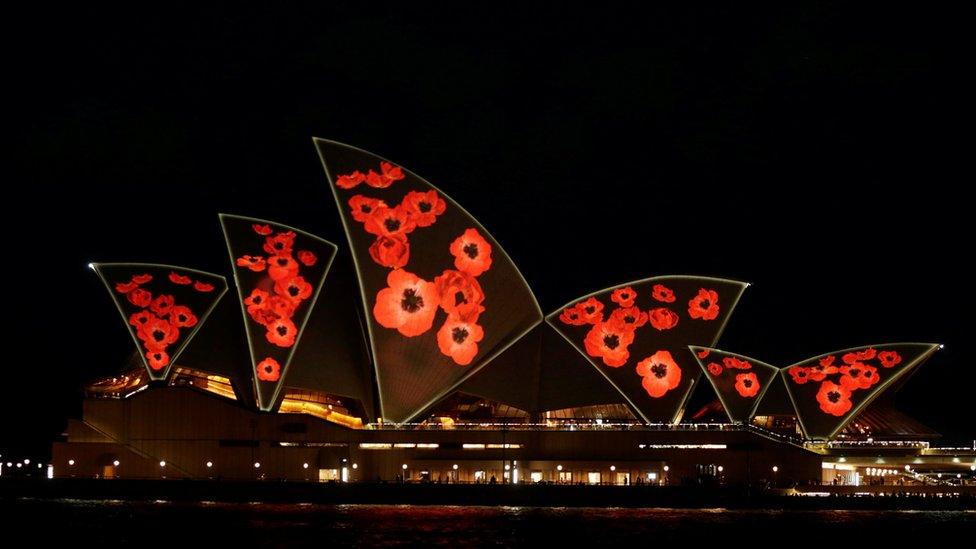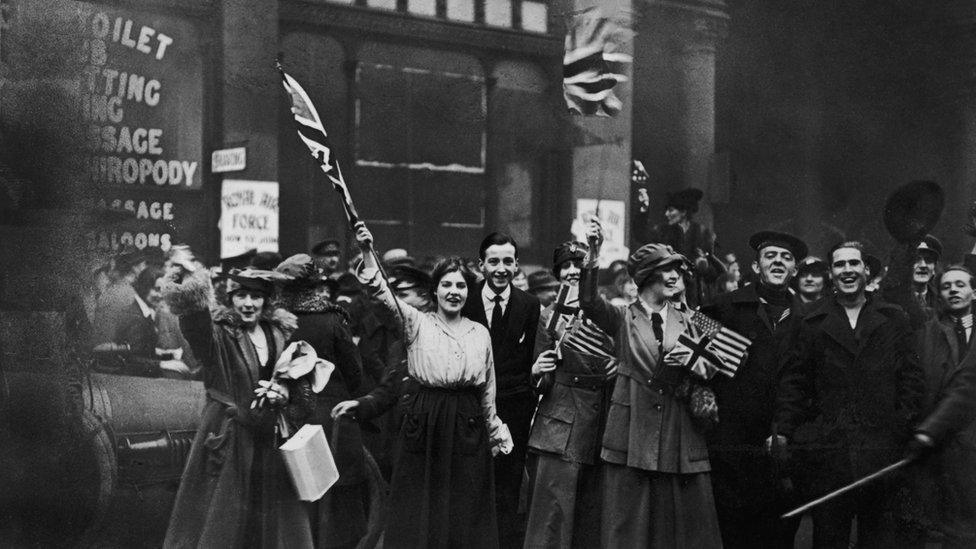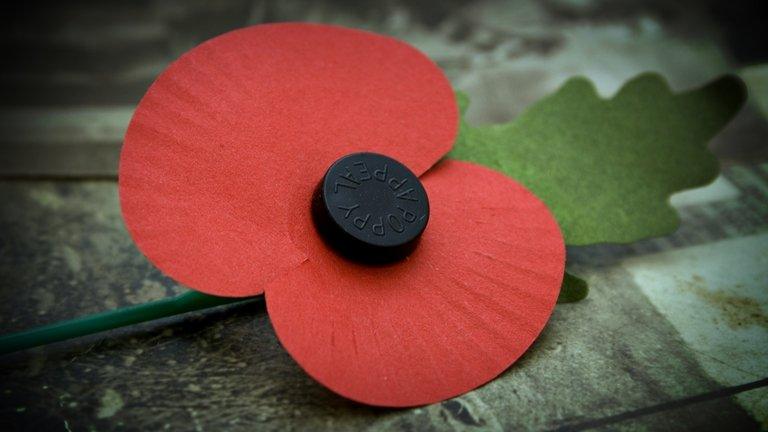Armistice Day 2016: Sydney Opera House lit up with red poppies
- Published

The famous opera house was lit up on Remembrance Day evening
The sails of the Sydney Opera House were illuminated with red poppies on Friday to commemorate Armistice Day.
Known as Remembrance Day in Australia, 11 November marks the halt of fighting in World War One in 1918.
The red poppy, which grew on the bloody Western Front battlefields, came to symbolise the end of the war.
The iconic Sydney building was lit up at 20:00 local time (09:00 GMT) to remember the servicemen and women killed in conflict.
The idea to project the Flanders field poppies came from the president of a suburban soldiers association.
Paul Graham, a 77-year-old veteran of the Royal Navy and Royal Marines, was selling poppies in Sydney last year when he realised many people knew little about Armistice Day.
The Poppy Appeal raises money for current and former armed services members, and their families, who are in need.
"I was amazed at the number of people who didn't know what the poppies were for," Mr Graham told the BBC.
Unlike Anzac Day, Armistice Day is not a public holiday in Australia.
How the poppy tradition began
Mr Graham spent a year lobbying the state government about his Opera House idea until he received a response declaring it an "excellent initiative".
"The premier got my letter and he said 'what a wonderful idea, we'll do that.' They sent education kits out to all the schools and tonight we'll see poppies projected on the roof of the Opera House."
Mr Graham, who served in Malaysia and the Suez Canal conflict, said many servicemen and women continued to suffer.
"I think it's really important that we do not forget our dead but that we also remember our living," he said.

Armistice Day

Soldiers and civilians celebrate Armistice Day on 11 November, 1918
The Allies and Germany signed an armistice in a railway carriage in the Forest of Compiegne, France, at 05:00.
Six hours later, at 11:00, the conflict ceased.
King George V announced that a two-minute silence would be observed in 1919, four days before the first anniversary of Armistice Day.
The silence continues to be observed every year on the 11th hour of the 11th day of the 11th month.
- Published11 November 2016

- Published11 November 2016
